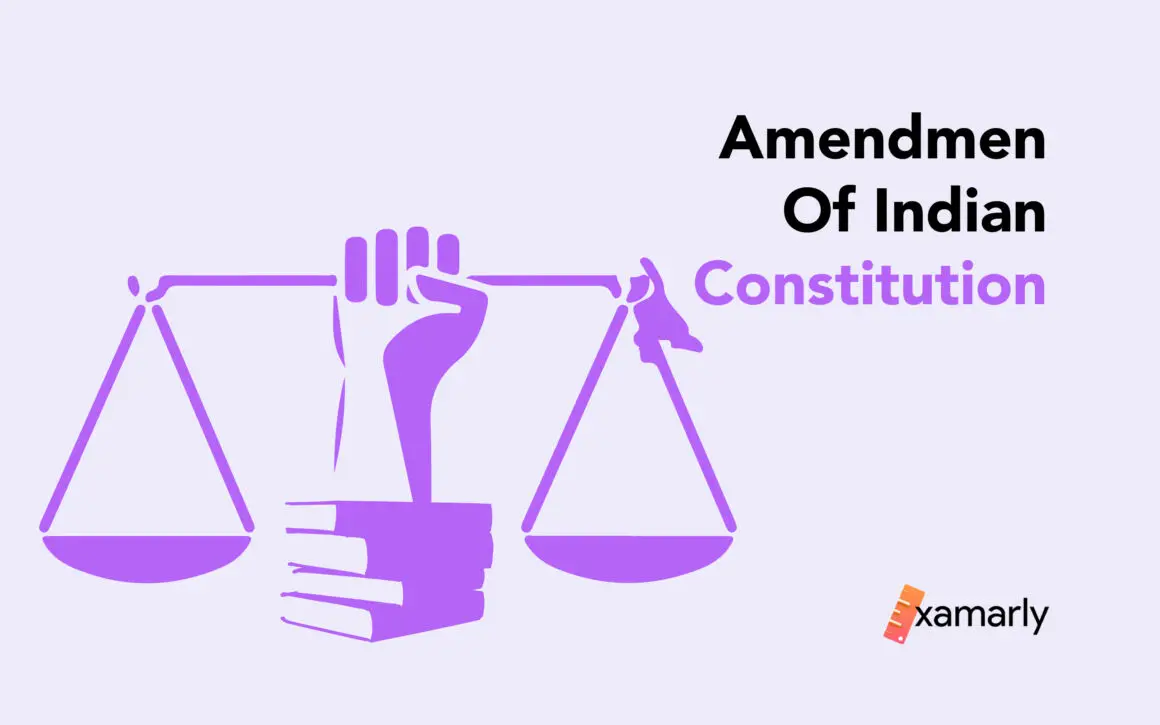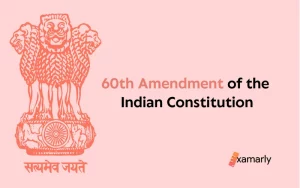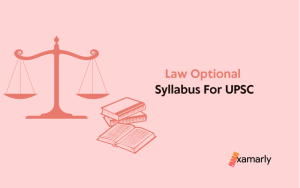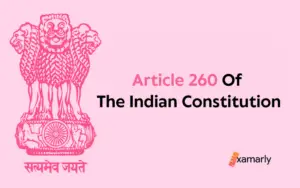The amendments to the Indian Constitution are a must-learn topic for UPSC Exam preparation and other competitive exams. That being said, the topic is rather vast and difficult to remember.
If you are looking for any tricks to remember amendments of Indian Constitution then you have come to the right place. Memory tricks are the most efficient means of doing this. But before we go on to these tricks, it is recommended that read the Constitution in its entirety before committing it to memory. Afterward, you can rely on these simple tricks and mnemonics to remember the dates and major data on each amendment. Once you’ve learned these tricks, you’ll have no trouble remembering the constitution and all of its amendments.
The Indian constitution has 12 schedules. Each of these schedules lists different aspects of government policy or bureaucratic activity, scheduled languages, etc. The Indian constitution is made up of 448 articles in total. They are all categorized according to their purposes. Hence, it can be overwhelming at times to study the constitution before you try to memorize it.
There are a few techniques that can help you remember the Constitutional Amendment Acts (CAA) clause and the important dates well. We have not tried to incorporate any age-old trick as there is none but every trick given is out of our creative mind only. There are no rules or rule book to guide you. Feel free to use your own mind to create more fun and interesting ways.
This article will solve your query on how to remember amendments of the Indian Constitution. Questions used to come from the Amendment of the Indian Constitution in UPSC or State PSC Exams. Go through this article to decode the mnemonics of some of the important amendments of the Indian Constitution.
- Tricks To Remember Amendments Of The Indian Constitution
- First Constitutional Amendment Act, 1951
- Fourth Constitutional Amendment Act, 1955
- Seventh Constitutional Amendment Act, 1956
- Eleventh Amendment Act, 1961
- Twenty-Fourth Amendment Act, 1971
- Twenty-Fifth Amendment Act, 1971
- Forty-Second Constitutional Amendment Act, 1978
- Forty-fourth Constitutional Amendment Act, 1978
- Fifty-Second Constitutional Amendment Act, 1985
- Sixty-First Amendment Act, 1989
- Seventy-Third Amendment Acts, 1992, And Seventy-Fourth Amendment Acts, 1992
- Eighty-Sixth Constitutional Amendment Act, 2002
- Conclusion
- FAQs
Tricks To Remember Amendments Of The Indian Constitution
Below are the tips for remembering some of the key amendments. You’ll find these mnemonics useful in remembering these amendments.
First Constitutional Amendment Act, 1951
Mnemonics: First time in 1951 3 Girls Earned 9 Silver
Meaning:
- First time in 1951: The 1st Amendment of the Indian Constitution came in the year 1951.
- 3 Girls : 3 additional Grounds of restrictions were added on freedom of speech and expression. Public order, friendly ties with other nations, and instigation of crime were included.
- Earned: Empowered the state to make special provisions for the social and economic improvement of underprivileged groups. Article 15(3) was appropriately amended so that any special provisions made by the State for the economic, educational, or social advancement of any disadvantaged class of people may not be contested on the grounds of discrimination.
- 9 Silver: Added 9th Schedule in order to protect government land acquisition actions as not being discriminatory and to prohibit judicial review of the actions mentioned in the Ninth Schedule. The new article 31B, which protects particular laws and enactments, is what gave rise to it.
In order to safeguard legislation relating to land reform and to end the zamindari system, Article 31A was set up.
Fourth Constitutional Amendment Act, 1955
Mnemonics: 9 in line for property in 1995
Meaning:
- 9: New bills related to property rights were introduced to the 9th schedule of the constitution.
- In line for property: In line means to have things under control. In the 4th Amendment, new restrictions on property rights were introduced. Articles 31, 31A, and 305 were amended.
- 1955: Year of Amendment.
Seventh Constitutional Amendment Act, 1956
Mnemonics: Hum 7 sath hain, jo tumhara wo humara
Meaning:
- 7: Refers to the 7th CAA
- Sath Hain: In addition to creating new States and revising the size and borders of existing States, the reorganization scheme eliminates the three kinds of States (Part A, Part B, and Part C States) and designates some areas as Union territories. 14 States and 6 Union Territories were created out of these. So differentiation of states was done away with and all states were brought together in one category and creation of union territories separately.
- Jo Tumhara Wo Humara: The provision that called for the creation of a common and single high court for two or more states. Thus the amendment extended the territorial Power of High Courts.
To learn more about the 7th Amendment Of The Indian Constitution, click on the linked article.
Eleventh Amendment Act, 1961
Mnemonics: Jo Ek Humara Election Wo Ek Final Election
Meaning:
- Ek and Ek: This refers to the 11th CAA.
- Humara election final election: The CAA provision said that no vacancy in the proper electoral college would allow the election of the President or Vice-President to be disputed. Additionally, it modified the procedure for choosing the vice president and established an electoral college similar to the one used to choose the president.
To know more about the 11th Amendment Of The Indian Constitution, click on the linked article.
Twenty-Fourth Amendment Act, 1971
Mnemonics: Amend any, Sign every
Meaning:
The Parliament was given the authority to amend any aspect of the Constitution, including the Fundamental Rights, in the 24th Amendment of the Indian Constitution of 1971. Additionally, it made the president’s consent to a Constitutional Amendment Bill necessary.
Twenty-Fifth Amendment Act, 1971
Mnemonics: Right gone, property gone but principles carried on…
Meaning:
- Right gone, property gone: 25th Amendment of the Indian Constitution limited the Fundamental Right to property
- Principles carried on: This CAA also provided that the directive principles of state policy contained in Article 39 (b) or (c) cannot be contested under situations of violation of the Fundamental Rights under Articles 14 (Equality), Article 19 (Freedom of speech and expression/ assembly/ association/ movement/ profession, trade or business) and Article 31 (property). Thus said DP – Directive Principles – carried on.
Forty-Second Constitutional Amendment Act, 1978
Mnemonics: Add 3, get Fundamental duties and directive principles free
Meaning:
Add 3, get Fundamental duties and directive principles free”, referring to 3 words in the preamble, 4 directive principles, and 1 new part of fundamental duties which were added by this Act.
The important provisions added by this CAA were:
- Added three new words in the Preamble i.e. socialist, secular, and integrity.
- Added new Part IV A, Fundamental Duties.
- Made the Cabinet obligated to the President.
- Added Part XIV
- Made constitutional amendments beyond judicial review or scrutiny.
- The application of Directive principles cannot be deemed unconstitutional because certain Fundamental Rights were violated.
- Included four additional Directive Principles of State Policy: Article 39 (Secure opportunities for children’s healthy development), Article 39A (Free legal aid), Article 43A (Participation of workers in the management of industries), and Article 48A (Environmental protection and preservation of forests and wildlife)
- Provided for the establishment of the All-India judicial service.
- The directive principles of state policy were given protection in respect of being annulled for the infringement of some fundamental rights.
- Helped declare a national emergency in even just one separate Indian region.
- Shifted Education, forests, wild animal protection, administration of justice, and court organization (apart from the Supreme Court and the High courts) are the five topics that were transferred from the state list to the concurrent list.
If you want to learn more about the 42nd Amendment Of The Indian Constitution, click the linked article.
Forty-fourth Constitutional Amendment Act, 1978
Mnemonics: 44 over 42
Meaning:
This 44th CAA reversed or removed the changes brought by the 42nd CAA which was passed by the Indira Gandhi-led government during the time of Emergency. Thus, one way you can remember this amendment is by memorizing “44 over 42”. A few important provisions were as follows:
- The right to Property was uplifted from the status of a Fundamental Right and was recognized as a legal right in Article 300A.
- Restored the previous 5-year term limit for the Lok Sabha and State Legislative assemblies.
- In the case of the proclamation of emergency provisions, it issued specific regulations which act as safeguards to ensure that the people in power do not misuse it and that the welfare of the people is guaranteed.
- Changes to the basic framework of the constitution may only be implemented if the people of India agree to them by a majority of votes cast in a referendum in which at least 51% of the voters partook.
To learn more about the 44th Amendment Of The Indian Constitution, check out the linked article.
Fifty-Second Constitutional Amendment Act, 1985
Mnemonics: Hi 5 TO Anti-Defect-10-law
Meaning:
This 52nd Amendment is itself very popular for it introduced the Anti-Defection law and added the 10th schedule. The anti-defection act forbids members of parliament and assemblies from switching sides from one party to another.
- 5 TO: 5 2 i.e. 52nd amendment
- Anti-Defect-10-law: Refers to anti-defection law under the 10th schedule.
To learn about the 52nd Amendment Of The Indian Constitution in detail, check out the linked article.
Sixty-First Amendment Act, 1989
Mnemonics: Sixty-first reduced the voting age for us
Meaning:
Sixty-First Amendment Act, of 1989 brought down the voting age from 21 years to 18 years for Lok Sabha and state legislative assembly elections. Hence, it changed the basis of adult suffrage in India.
Seventy-Third Amendment Acts, 1992, And Seventy-Fourth Amendment Acts, 1992
Mnemonics: From seventh heaven to the ground level
Meaning:
These constitutional amendments are one of the most important ones as they added the third tier in the political system of India i.e. the Gram Sabha or the Village Panchayats and the Municipalities.
- Seventh: The seventh heaven would help you remember the 73rd and 74th numbers
- Ground level: This would help you relate to the lowest tier, the grassroots level of government of the Indian polity i.e. the panchayats and the municipalities respectively.
To learn more about the 73rd Amendment Of The Indian Constitution and the 74th Amendment Of The Indian Constitution, check out the linked articles.
Eighty-Sixth Constitutional Amendment Act, 2002
Mnemonics: Education taught me that 8+6=14
Meaning:
- Education: The 86th Amendment of the Indian Constitution guarantees the right to compulsory education for children aged six to fourteen, as well as early childhood care till the age of six. It has inserted Article 21A (Right to Education as a Fundamental Right) and replaced Article 45 (Early Childhood Education) of the Directive Principles of State Policy, as well as amended Article 51A (Fundamental Duties) to add a new duty of parents to provide education to their child aged six to fourteen years.
- 8+6=14: 8+6 indicates the 86th amendment act and education and 14 relates to the amendment that makes education for children up to 14 years compulsory.
Conclusion
However, the best way to remember the must-know articles, special provisions of the Constitution, or the important amendments is to understand the relevancy of each. You need to go through the different provisions with respect to the different parts of the Constitution or understand how they have molded the Indian polity. Otherwise, you will never understand the importance of each and thus would not be able to memorize them.
Hope you like this article on tricks to remember amendments of the Indian constitution. Hopefully, this will help you in the civil services examinations and other examinations as well. We will make the best tricks for you and revert to you. Let us practice responsible citizenship. Sharing is Caring. And nothing can beat the power of shared knowledge. Hence share this post with your friends. Happy learning!
FAQs
Which amendment is known as the mini constitution?
The Forty Second Amendment Act of 1976 is the “Mini Constitution” as it incorporated a lot of major provisions in the Constitution along with some major changes to it.






